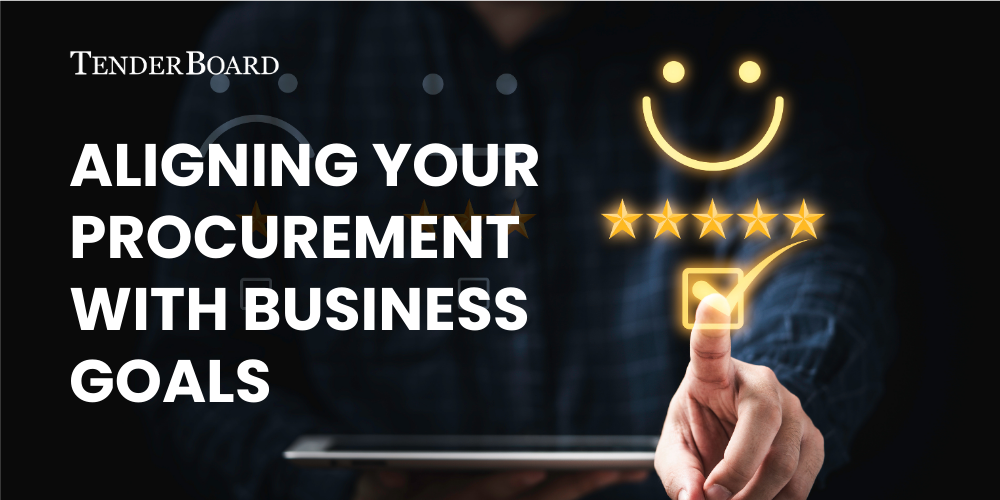The procurement function in companies demands meticulous and multifold processes that when performed manually, it becomes challenging for procurement professionals to maintain and ensure corporate governance. With procurement team sizes stagnating while they face a 10.6% increase in workload, Procurious’ research found that 80% of procurement professionals were asked to ‘do more with less’, leading them to feeling burned out from the burden of manual procurement, due to the repetitive and cumbersome nature of their duties.
With digital transformation, procurement professionals are now able to rely on modern software solutions to take over mundane tasks. According to PwC’s Procurement Survey, 80% of companies surveyed have started to transform their procurement processes, embracing the power of technology to drive efficiency and innovation.
And while the search for software solutions often starts with big-brand names, it’s vital to acknowledge that these may not always be the most suitable choice. Various best-of-breed solutions offer distinct advantages and could potentially deliver better value for money. The more crucial factor to consider when selecting an eProcurement solution are your specific needs, and appropriately right-sizing your solution. This ensures that the adoption of software will not only be effective, but it is also tailored to your unique requirements.
How Can You Right-size Your Procurement Software?
Selecting the right procurement system is crucial for enhancing efficiency and meeting company goals. To right-size effectively, consider the following steps:
1. Conduct a Needs Analysis
To kick start the process, it is essential to conduct a thorough Needs Analysis to understand the challenges faced by your procurement department in aligning processes with the company’s goals.
For example, you may decide on a Two Envelope Tender System for corporate governance, but as multiple people are required to receive, split and witness the proposal evaluation, this may pose a challenge for a lean procurement department.
Thorough research and input from key stakeholders allows you to identify issues affecting the procurement function, such as a lack of visibility, inadequate policy enforcement, or sluggish and error-prone processes. Armed with this insight, the selection of procurement software for your organisation can prioritise its ability to effectively address these key concerns and align with your company’s unique needs.
Understanding the importance of this analysis stage is crucial, as it lays the basis for a more informed evaluation and selection of a system that fits your organisation’s needs.
2. Explore Procurement Solutions
When sourcing for an eProcurement solution, organisations may sometimes immediately turn to well-known brands, believing them to be good solutions for your business. However, this assumption may not always hold true.
Such solutions often come with a complexity that might exceed the actual requirements of your company, with higher pricing to match its services. The software is usually loaded with features that are tailored for managing extensive global supply chains, warehouses, and inventory. While these solutions can be beneficial for businesses with such extensive needs, for many companies these advanced features go underutilised, resulting in unnecessary expenses.
There are procurement software that are better suited for companies in different stages. With SaaS eProcurement Platforms that are no-code and highly configurable, these systems can provide a solution that aligns with your requirements. Implementing such a solution guarantees a procurement process that is not only more cost-effective but also more efficient.
This brings us back again to ensuring you understand your company’s procurement needs and challenges so you can find a solution that is the “right size” for your organisation.
Apart from ensuring the necessary features to solve your challenges, here are some other considerations for your software evaluation:
- Configurable Workflow and Processes
When evaluating procurement software, key considerations should include its adaptability to changes in workflows and processes. A solution that can seamlessly integrate into existing systems and scale with your company’s growth is vital.
- Easy to Adopt
Additionally, ease of adoption by both employees and suppliers is important. A user-friendly interface ensures a smoother transition and encourages active participation from all stakeholders.
3. Evaluate Your Vendors
The role of vendors is equally vital in the success of your software implementation. Some considerations to have while evaluating vendors include:
- Evaluate the vendors’ implementation processes and select one that aligns with your business processes and goals. For example, vendors may offer either an Agile or Linear implementation approach. The Linear approach defines goals and objectives from the beginning and implementation follows a set roadmap to ensure a timely implementation that hits all its milestones. On the other hand, the Agile method offers a more flexible roadmap, with iterations and reviews performed regularly during implementation to ensure the system fits into the company’s processes.
- Additionally, check the vendor’s reputation to ensure they are reliable and compatible with your organisational goals. It is also important to learn about the team who will be involved in the project. Both the project management team and customer success team are crucial for implementation and support thereafter, so it is imperative to understand if their style and processes match that of your organisation’s.
4. Request Software Demos
The ultimate goal of the demo is to provide you with the chance to understand and test the procurement software solution against your unique business challenges, to better understand the features offered against what you require. Ensure you communicate detailed requirements, areas of concern, and unique challenges; this gives the product specialist the opportunity to prepare a meaningful demo that will give you insight into whether the software will indeed solve your challenges, or not.
Conclusion
In conclusion, finding the right-sized procurement software that fits your company well can help your procurement team succeed in meeting company goals, while also offering better value for money. The process to adopt adopting a suitable solution does involves an exploration of your company’s needs, consideration of all types of solutions, evaluation of vendors, and engaging in insightful demos. And while these steps may take time, it will also pave the way for a successful procurement software implementation that aligns seamlessly with your organisational objectives.
If you are exploring eProcurement software for your company, TenderBoard eProcurement Platform offers a highly configurable solution that can be tailored to fit into your forms and workflows. Our automation tools have removed up to 80% of manual operation for our customers, and our user-friendly interface encourages smooth adoption from both users and suppliers.
Keen to explore TenderBoard? Reach out to us for a personalised demo today.













